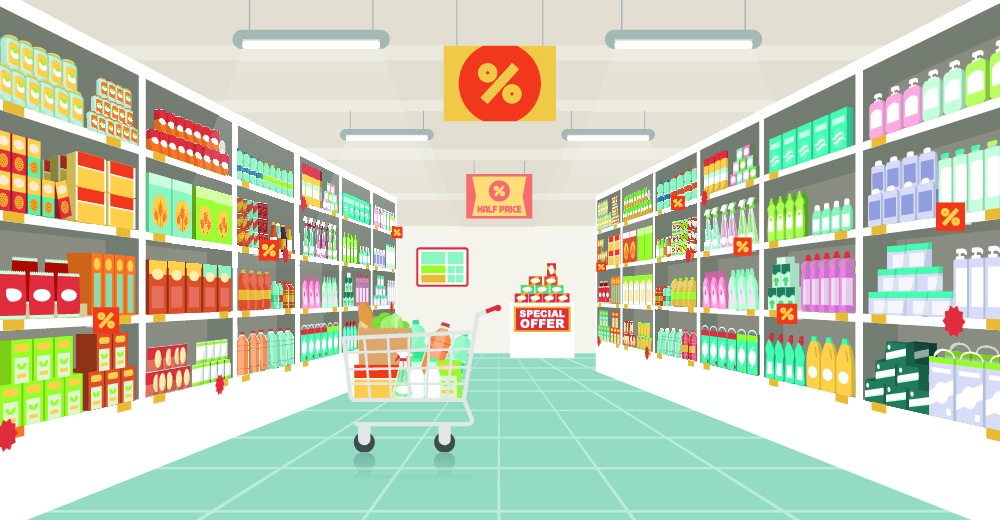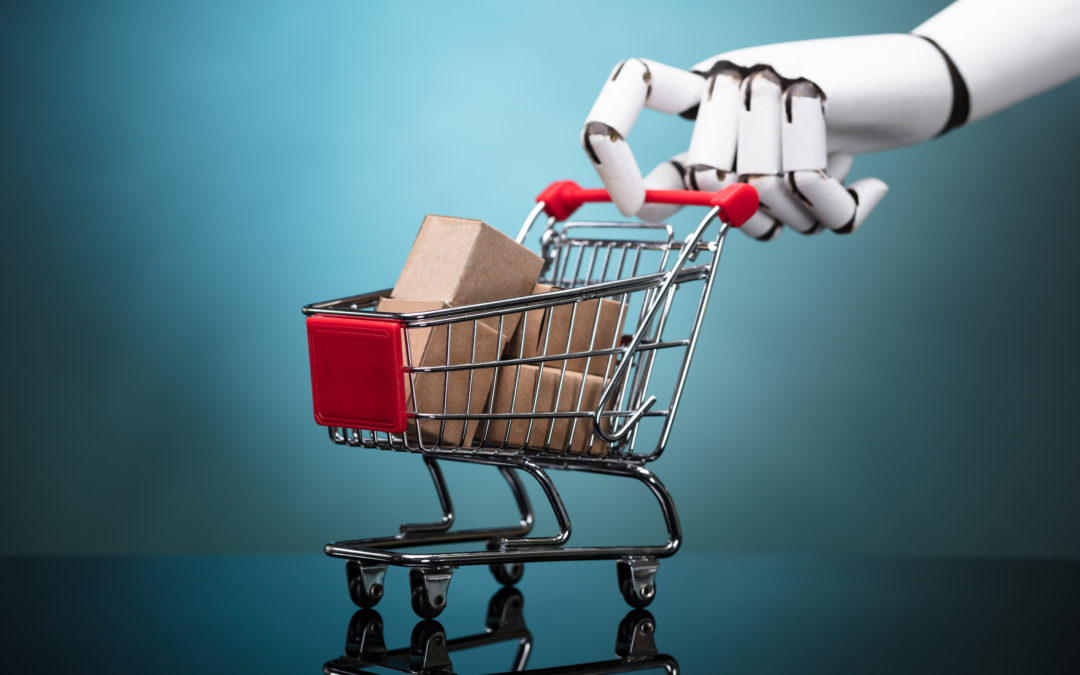- Design industry shaping loyalty programs
- Integrate easily and go live quicker
- Deliver hyper-personalized consumer experiences
Capillary acquires US-based Brierley+Partners Read more >
Capillary named a Leader in The Forrester Wave™: Loyalty Technology Solutions, Q1 2023 Report Read more >

Let’s accept it.
It is a chore.
Yes, we are talking about grocery shopping – one of those unavoidable duties that millennials call part of adulting, and not in a fond way!
So, what do they do about it?
Often, they put it off till they no longer can. But once they decide to get things in order, research suggests, they are starting to look online, increasingly.
While grocery eCommerce is still miles behind electronics and apparel eCommerce, it is fast picking up, primarily driven by the need for convenience among the new age working individuals.
International researcher IGD Asia expects sales across the continent’s top 12 online grocery markets to grow from US$99bn in 2019 to US$295bn in 2023, making it 7.6% of the total grocery retail sales in these markets.
Shirley Zhu, program director at IGD Asia, predicts South Korea will lead this phenomenon propelled by the rise of single-person households and mobile shopping in the country. She also adds that India and Indonesia will become increasingly important due to their scale.
Zhu concludes that suppliers need to consider several things in gearing themselves up for this fast-paced growth in Asia’s online grocery market. And one of the factors she mentions is ‘supply-chain’! While partnering with brick-and-mortar retailers is certainly a way forward, newer supply chain formats like Dark Stores are offering a much more advanced model of fulfilling electronic grocery orders.
As the name suggests, a Dark Store practically exists in the dark for the shopper. It is not one of those stores with an impressive customer-facing shop front or lighting.
Dark stores were initiated in the UK and meant to serve a focussed purpose – to offer click-and-collect fulfilment for online orders. As such, these stores do not exist in prime real-estate spots such as high streets or shopping malls. They are instead tucked away in relatively nondescript establishments strategically at locations with great road connectivity.
Inside, you have pickers scurrying to collect ordered items for online shoppers and send them off for delivery. Outside, you have vehicles shuttling in and out, picking one order after another for delivery to addresses in the earmarked pin codes.
If the store is highly mechanized, you may even see robots picking groceries and items, requiring, of course, higher inventory accuracy, but ensuring in return much greater efficiency.
Grocery has its unique category level challenges, such as the need for a high number of SKUs and, of course, item perishability. Moreover, online grocery stores are much more dispensable, with the ‘good old’ street-side vendors and marts readily available and now also offering near-real-time doorstep delivery to their hyper-local customers. All this means that the challenge in grocery eCommerce lies not in getting the online order alone, but in fulfilling the same and getting customers to keep coming back week after week, or day after day! While everyone from heavily-funded startups to ecommerce mammoths like Amazon and Flipkart have taken a shot at hyperlocal commerce for grocery, none of them are yet to get it totally right. With brands like Spar and Reliance Smart investing in hypermarket ecommerce solutions and joining the fray, the segment has become even more competitive.
Here, Dark Stores come into the picture. They work especially well for groceries by addressing some specific challenges. Let’s see how:
Someone needs a 6-loaves pack of gluten-free bread, and someone else needs a multi-grain, full-size pack of chemical-free and preservative-free home-made bread. When it comes to grocery, there could be as many SKUs for practically the same item as the number of consumers, simply because when it comes to food, everyone likes to have it their way.
By focusing on storage and click-and-collect functionality, Dark Stores can optimize SKU management in many ways. One, they save real-estate costs by steering clear of high traffic zones in the towns. Two, they can cater to multiple online grocery stores at once, so real-estate costs get shared. Three, they also save space because they do not have to bother about the shopping experience and display or in-store advertising. Thus, dark stores can accommodate much more variety per item at a much lesser space cost. What’s more, the scope for better SKU management increases fulfillment accuracy and reduces mix-ups, which are otherwise commonplace in the delivery of groceries ordered online.
There’s yogurt, there are pulses, and there’s the fresh spinach, all within the same order. Grocery involves items with all kinds of expiry windows. And they are all to be delivered together in their ideal states. Crackers mustn’t crack, liquids mustn’t spill, and what’s airtight must remain so. It is not easy to achieve this at scale. Unless there are dedicated places and processes designed to serve this very purpose – to retain item freshness not just for the duration of its storage but also till it reaches the consumer’s plate! That means fulfilling online grocery orders is not as simple as picking the item off the shelf (if it exists in stock that is!) and dropping it into the cart to be delivered whenever.
It requires impeccable inventory management, stock replenishment and order fulfilment – all of which needs to work seamlessly so that the window between off-the-store-fridge and in-the-home-fridge is as short as possible. Long story short, grocery fulfillment requires pickers to work at SPEED – not easily afforded in your average retail grocer where aisles are full of leisurely shoppers gliding around with their shopping carts.
Dark stores come to rescue by dedicating the much-needed time, space, and visibility for stock managers and pickers to manage order fulfillment while maintaining desired freshness levels for all items in the order. Brands will also need to invest in omnichannel ecommerce solutions that support hyperlocal capabilities like geo-fencing and localization.
Online grocery shoppers do not think beyond a few days. Orders happen not so much in foresight, as out of emergency. And delivery is expected the same day, at the most the very next day – adding to the speed challenge. Consider a situation where online orders may flood in at midnight, and delivery may be expected in time for the next day’s breakfast preparation, i.e., in the wee hours of the morning. Quite obviously, the brick-and-mortar grocery retailers are a bad site for the fulfillment of such an order. Hence, another grocery eCommerce challenge, that dark stores can address much better.
By addressing such challenges specific to grocery eCommerce, dark stores promise multiple benefits for the online storer as well as for the end consumers:
Easier to serve larger areas: Dark stores can serve multiple locations with high order density, unlike grocery retail stores, which come with space and volume limitations.
Greater product availability: Being dedicated to online order fulfillment, dark stores offer better visibility into stock availability and help e-tailers plan smarter.
Reduced cost of operations: Real-time visibility, space and time optimization, and efficient supply chain together make dark stores a much wiser choice from a financial angle, considering the volatility in the grocery market.
Better customer service: Whether it is 24×7 order fulfillment, picking accuracy, or living up to the quality promise, dark stores are in a much better position to make it possible.
Indeed, there are umpteen challenges with Asian grocery eCommerce. The consumers depend highly on the neighborhood stores, they like to touch and feel products in the before purchase, and they think of shopping mostly when the next meal is due!
Yet, the overall picture looks good, given the market size. South Korea, China, and Japan are fast establishing themselves in terms of market share and scale. And Singapore and Taiwan will have more advanced channels by 2023. However, apart from size and growth, the different markets vary also in terms of grocery purchase habits and cultures. As a suggestion to marketers, IGD program director, Zhu points out, they will need a strategy for where to invest first. Overall, in terms of the online share in the total grocery market, Asia appears to be not far behind (7.6% by 2023), compared to the US (10% by 2022) And now, with Amazon entering this market, it is difficult for grocery retailers to shut their eyes to eCommerce.

February 24, 2020 | 4 Min Read
Let’s accept it. It is a chore. Yes, we are talking

November 26, 2018 | 4 Min Read
For most of human history, people have been good at predicti

November 13, 2018 | 4 Min Read
No matter where you look, there’s no avoiding news of the